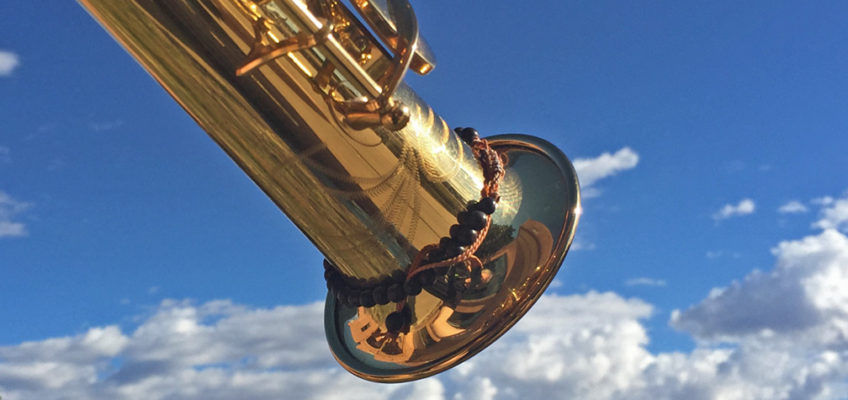Once I had put in several thousand hours of practice on the soprano saxophone, I started in on composing a new album of material, called Gratitunes. This would be my 14th music album, and the first one on which I wasn’t hiring a soprano player…
My practice sessions had focused on tone, pitch, scales, arpeggios, and learning to improvise on jazz standards. For recording my album, the most important part of that was tone. That’s because tone is the only thing I’m not able to fake on a recording.
I tend to work out all of my parts in advance, so although improvisation is part of my composing process, it isn’t a big part of the recording process. Once I’m ready to record, I’ve already experimented with lots of various melodic lines, and meticulously worked out what I’ll be playing. I’m not a jazz player, and while I’d love to be more proficient at jazz improvisation, I’m glad that there are already plenty of great people doing that. Instead I concentrate on composition, arranging, and studio production, which is where I believe I can do the most good. I cover piano, fretless bass guitar, and now soprano sax on my own, and once I’ve worked out all the parts of a tune I bring in other players as needed.
Since I have my own studio, I have the luxury of being able to do as many takes as needed, without worrying about taking too long. On soprano I’ll typically focus on a section of a tune and record up to ten takes of that part. Then I’ll listen to all of the performances, and take the very best phrases from each, comping them together into a cohesive take. As long as I use the same reed for all the takes, even if I do them on different days I’m able to build a consistent, smooth sounding performance, and it sounds much better than it would if I were just blowing from one end of the song to the other.
If I wander in my pitch, thanks to the miracle of modern recording technology (I use Digital Performer for my Digital Audio Workstation), I can clean up anything that goes sour.
I’ve noticed something interesting about recording and pitch on my soprano. When I’m playing over a jazz progression—a tune that has lots of 7ths—pitch variances are not particularly obvious. But when I’m playing on a more pop-oriented progression, one without a lot of 7th chords, any pitch variation becomes much more obvious. I suppose that somehow the 7ths introduce enough dissonance that it tends to cover up some pitch variances. Most of my songs don’t have a lot of 7ths in the chords, so my performance has to be spot-on, or it needs to be tidied up in post-production.



